Class in the United States
In order to understand what is happening in the United States, in the aftermath of the presidential election, one needs to comprehend the distribution of power in the country. It is widely recognized that white people in the United States have more power than Black people, and that men have more power than women. Race and gender are indeed two very important variables for understanding what is occurring in U.S. political life. There have been many analyses put forward in academic, political, and media forums explaining how racism and sexism operate and are reproduced in the political institutions of the country. Many articles have also been written on the role that both sexism and racism played in the last presidential elections, and in the huge mobilizations both for and against Donald Trump, who is widely perceived as the de facto leader of the racist and sexist forces. Race and gender, however, are not enough to explain what is going on nationally.
Many studies have done a very good job of explaining the results of the elections, both in 2016 and 2020. But their overall analyses are insufficient. Race and gender alone are insufficient to explain the results of the last elections. Another variable of power is needed that very rarely appears in the treatment of U.S. political life: social class. Indeed, even in academic circles, the concept of social class rarely appears, as though in the United States there are no social classes. But there are indeed social classes.
At the top of the U.S. class structure is the corporate class (the owners and managers of large companies), a very small sector of the population. Joseph Stiglitz, winner of the Sveriges Riksbank (Bank of Sweden) Prize in Economic Sciences in Memory of Alfred Nobel, has called them the top 1 percent, a term popularized by the Occupy Wall Street movement. This is followed by the middle class, which has different layers. The upper-middle class can be divided into two major groups: the professional middle class (professionals with higher education), the majority of whom are men, but with a quickly growing female population; and the owners and managers of medium-sized enterprises, equivalent to the petit bourgeoisie in the European narrative. In the United States, a considerable portion of small business owners and more privileged workers in the private sector, such as lower-level supervisors, corporate sales people, lower-level technicians, maintenance workers, and the like, predominantly white, make up the lower-middle class occupying a position above the working class and below the upper-middle class. This is typically the most reactionary segment of society, often allied against both the working class and the upper-middle class, and, if mobilized by those at the apex of society, it constitutes the mass basis for what is now called right-wing “populism” or neofascism.
Then there is the working class, which is the majority of the population. It has four major components; three very large and the fourth very small. Administrative (such as secretaries) and commerce workers (such as those working in supermarkets) make up one of the larger components of the working class. A first observation is that the majority of them are women. Other groups include industrial workers—also known as blue-collar workers—the majority of whom are men; service workers, who occupy roles in hospitals, medical institutions, social services, transport, post offices, and other essential services, the majority of whom are women; and agricultural workers, a very small, but extremely important, group, who produce most of the food consumed in the United States.
The second observation that should be made is that the U.S. class structure is very similar to the class structure of most major Western European countries. There are, of course, some differences (such as a larger industrial sector in Germany), but for the most part, the similarities outweigh the differences. The third observation is that the majority of people in the United States are aware of the existence of social class and define themselves as working class. Chart 1, “Class Identification of Employed Persons Aged 25 and Older, by Family Income,” summarizes the subjective existence of social class. It is important to underline that social class exists not only objectively, but also subjectively. The perception widely promoted by the academic and political establishments is that the majority of the United States considers themselves middle class. And indeed, when Americans are asked to define themselves as upper, middle, or lower class, most answer that they are middle class. This is the evidence most frequently shown to support the position that the United States is a middle-class society. In such an argument, no mention is made of how extremely biased the question is: the prevalent classism in the dominant culture does not seem to realize (or acknowledge) that the term lower class is profoundly offensive. It is one thing to refer to a “low-income class” and quite another to refer to a “lower class.” If, however, Americans are asked if they are members of the upper class, middle class, or working class, more people define themselves as working class than middle class. Incidentally, the same happens in France, Germany, Italy, and Spain.
Chart 1. Class Identification of Employed Persons Aged 25 and Older, by Family Income
Source: General Social Survey.
Chart 1 shows the results of one of the most detailed studies ever done in the United States on class perceptions, where people were asked to which social class they belonged—upper, middle, working, or lower class (this last one referring to the “unskilled” working class). The chart shows how the overwhelming majority of families earning below the median family income ($62,000) defined themselves as belonging to the working class. In this study, people were asked how they felt about many subjects, from culture and music to their perceptions about what the government should do. And it appears clearly that each class, besides being aware of the class they belong to, has different views. Social class has an impact on people’s answers to a question about taxing the rich: answers vary greatly depending on the social class of the respondent. When asked if taxes for the rich should be increased, upper-class people said no, whereas the response was much more positive among the working class. The same occurred with several other questions regarding the government’s role in redistributing income and related issues.
For the most part, the differences between objective and the subjective class identity are not as large as we may be led to believe. This is similar in Western Europe (I have lived in Spain, Sweden, and Britain, and lecture in many other European countries as well, such as Italy and France, and I can testify that this is indeed the case. I have also lived in the United States for half a century, and believe I know the country very well). Of course, there are many differences, but the populations’ class self-identification is not so dissimilar between the countries on either side of the North Atlantic.
Class mortality differentials are much larger than race or gender mortality differentials. Such similarities between the United States and Western Europe appear not only in how their populations live but also in how they die. Chart 2 shows U.S. mortality rates for heart conditions by social class. The corporate class is not included, because there are so few that they do not appear in the sample population. Notice that the blue-collar worker has a mortality rate from heart conditions double that of the professional class. Mortality differentials by social class are much larger in the United States than in Western Europe, and class mortality differences are larger than race and gender mortality differences on both sides of the North Atlantic.
Chart 2. Mortality Rate from Heart Disease (per 10,000 of the Population)
Source: Vicente Navarro, “Race or Class Versus Race and Class: Mortality Differentials in the United States,” Lancet 336, no. 8725 (1990).
How Class Power Appears in Political Institutions
Chart 3 shows the class configurations of the three top federal political institutions during the last twenty years: the Cabinet (the Council of Ministers in Europe), the Senate, and the House of Representatives. At the top of the chart is the U.S. class structure. The majority of the members of these institutions belong to the corporate class, closely followed by upper-middle class. The working class does not appear anywhere in the Cabinet nor the Senate, and only appears in the House with an extremely limited representation of 1.3 percent. Unsurprisingly, Black people and women are also underrepresented in the Cabinet, Senate, and House.
Chart 3. Social Class Composition of the United States and the Executive and Legislative Branches of the Federal Government
Sources and Notes: Class composition elements derived from U.S government records with data from the 2020 U.S. Census.
How Class Power Is Reproduced in Representative Institutions
Chart 4 shows that the U.S. president is not chosen directly by the electorate. On November 3, 2020, the electorate voted for 435 representatives in the House of Representatives and the 100 members of the Senate. This last representative chamber is actually very unrepresentative, as the system used to elect its members is biased and favors small rural and conservative states over large and highly industrialized states (where the majority of the working-class lives). All states, regardless of their demographic size, have two senators. A voter in California, which has almost forty million inhabitants and two senators, is much less influential than a voter, for example, in Wyoming, which has only half a million inhabitants but also has two senators. Small rural and conservative states have as much power as the larger states, which helps explain the conservatism of the powerful Senate. For example, the Senate, until recently controlled mostly by the Republican Party (which has become ultraright with Trump), approves the federal budget, the presidential appointments, including the members of the Cabinet, and the Supreme Court judges.
The U.S. president, however, is not elected directly by the House or by the Senate. Instead, the president is elected by a special chamber—the Electoral College—whose membership is 538, equal to the number of Senators (100), plus members of the House of Representatives (435), plus 3 members from Washington DC. Its composition is decided on a state level by the electorate via a system that also favors small states over large ones. To take the example of Wyoming again, it is a Republican state with only half a million people and three delegates in the Electoral College. If elections were proportional, California (a Democratic state), with 40 million inhabitants, would have 240 delegates, yet it only has 55. Similarly, Kentucky, a Republican state with 4.4 million inhabitants, has 8 delegates in the Electoral College, while New York, a Democratic state with 19.8 million people, has only 29, when it should have 35 if the Electoral College were proportional. And again, South Dakota, a Republican state with 885,000 people, has 3 delegates, while Illinois with 12.8 million people should, proportionately, have 43 delegates, rather than 20, and so on. This situation explains that, even though in the last twenty years more votes have been cast for Democratic presidential candidates than for Republican candidates (except in 2004), the bias in the composition and membership of the Electoral College means that the U.S. president has been a Republican for most of these years, despite Democratic candidates having received the majority of the popular votes from the U.S. electorate. In spite of the unpopularity of this body, the chances of it being eliminated are close to null. It would require the support of two-thirds of the Senate plus ratification by three-quarters of the fifty states.
Chart 5. Popular Votes for Presidential Candidates
The electorate does not choose the president. It is the Electoral College, which does not reflect entirely the popular vote because small rural states are over-represented.
In the last twenty years, there have been more votes for the Democratic Party than for the Republican Party (except in 2004).
| 2000: Al Gore obtained 543,000 more votes than BUSH. | Years with Democratic presidents (during 2000–2020): 8 |
| 2004: BUSH obtained 3M more votes than Kerry. | |
| 2008: OBAMA obtained 9.5M more votes than McCain. | |
| 2012: OBAMA obtained 5M more votes than Romney. | Years with Republican presidents (during 2000–2020): 12 |
| 2016: Clinton obtained 3M more votes than TRUMP | |
| 2020: BIDEN obtained 7M more votes than Trump |
The lack of proportionality reproduces a very unrepresentative congress, with the exclusion of left-of-center and left-wing parties. The federal electoral system effectively allows for only two parties, both of them right wing: the Republican Party (ultraright) and the Democratic Party (a liberal, center-right party and observer to the International Association of Liberal Parties), thus excluding left or left-of-center parties. Proportionality would mean that a party obtaining, say, 30 percent of the popular vote would have 30 percent of the parliamentarians. It is not so in the United States. Unless a party obtains a plurality of the votes, the party loses absolutely, regardless of whether it is losing for receiving 49 percent or just 1 percent of the vote. This makes it very difficult for new parties to have a presence in representative chambers. The only opportunity for individuals from other parties to be elected is in the primaries of either of the two traditional parties. This is how a socialist, Bernie Sanders, ran in the presidential primaries of the Democratic Party. Sanders, a well-known independent senator from Vermont, put forward progressive proposals such as the establishment of a $15 per hour minimum wage, single-payer health care, and a Green New Deal, all of which became very popular even among conservative voters. But Sanders was clearly marginalized by the apparatus of the Democratic Party in 2016 and again in 2020, making it very difficult—practically impossible—for him to win. It is yet another example of how practically impossible it is for a left-wing candidate to attain a meaningful political space in the U.S. government. The country’s very weak labor movement helps explain the absence and limited influence of left-wing parties in representative U.S. institutions, which in turn serves to lead to further restrictions on labor rights in a vicious circle.
There is a lack of awareness outside the United States about how severe the limits of U.S. democracy are. One indicator of this is that 150 million people voted for two candidates—one Republican (Trump) and one Democrat (Joe Biden)—both explicitly against the Green New Deal and Medicare for All (the slogan of the call for universal health care), proposals that are very popular but were not offered to the electorate in the recent elections. The very limited proportionality of the electoral system and near impossibility of third parties to appear in the two representative chambers gravely curtail U.S. democracy.
A further limitation of U.S. democracy is the privatization of the electoral process. Most of the funding of elections is private, and there is no limit to how much money can go to the Democratic or Republican party or their candidates. This money is used primarily to buy access to the media, which is available to the highest payers—again, without any limitations. The contributions from large economic, financial, and professional associations are particularly important before the electoral process starts, when the candidate is not yet well known. Afterward, other contributions are added to that list, including smaller contributions from individual citizens, as was the case with Sanders (whose average donation was, famously, $27). This private funding does play an important role in the electoral process, since it can limit candidates who are unable to obtain as much private funding to support their candidacy. This private funding also appears in some European parties, but for the most part is illegal and can be considered corruption. In the United States, it is legal, normalized, and expected.
This insufficient democracy primarily affects the working class and limits the defense of its interests, including the development of its political instruments such as left or left-of-center political parties and class-oriented trade unions. The absence of left-wing parties in U.S. representative institutions is accompanied by the limited power of major trade union associations. Unions, such as those that are part of the American Federation of Labor and Congress of Industrial Organizations, are practically forbidden by the Taft-Hartley Act to function as rank-and-file unions. Sympathy strikes (meaning a sector of labor supporting another sector), as well as universal or general strikes, are forbidden in the country. Strikes and collective bargaining agreements are only sectoral and are very decentralized, weakening labor. In reality, U.S. trade unions are much more expressions of business unionism than of class unionism. Such weakness of labor is the dream of the liberal parties, funded and created by the large employer class in the majority of Western Europe. All of the neoliberal public policies implemented in Western European countries (including the social democratic ones) are aimed at weakening labor, taking the United States as the model in attempts to “Americanize” labor markets and welfare states.
This situation of powerlessness explains the majority of the U.S. working class’s great distrust and disinterest in the political process. Only half of the population votes in presidential elections (and even less in congressional elections that do not coincide with presidential ones) and there is a direct relationship between level of income and electoral participation (the lower the income, the lower the participation). The half of the population that does not vote is the majority of the working class. This means that the majority of the voting population are members of the lower-middle class, upper-middle class (professional class), and upper class. Polling agencies (which predicted a large victory of the Democratic candidate Hillary Clinton in 2016 and of Biden in 2020) erroneously predicted a landslide victory of Biden over Trump, failing in their estimates because they focused on the voting populations in previous elections without taking into account the behavior of the abstentionists—the majority of the working class.
Trump: 2016 and 2020
Much has been written about why Trump won in 2016 and how he mobilized the highest number of votes for a Republican candidate in history in 2020. Many attribute the high mobilization and polarization of the electorate in support of Trump to a supposed increase of racism and sexism in the United States (take, for example, The Upswing, the latest book by Robert D. Putnam from Harvard University). The primary reason was thus considered a cultural one: the politics of identity seem to have substituted the politics of redistribution in recent years. Without denying that racism, sexism, and other forms of oppression play an important role, class—which is often overlooked—also needs to be considered.
The victories of Ronald Reagan in the United States and Margaret Thatcher in the United Kingdom had a significant and long-lasting impact. Neoliberalism, promoted by the dominant classes, was their response to the advances of the labor movement on both sides of the North Atlantic during the postwar period (around 1945 to 1974, known as the “golden age” of capitalism), and their neoliberal policies significantly weakened forces of organized labor. Before the neoliberal revolution, the Democratic Party in the United States stood in the complicated tradition of the New Deal established by Franklin D. Roosevelt (the most popular president after the Second World War and the founder of the U.S. welfare state). The New Deal was followed later by the Great Society that established, under President Lyndon B. Johnson, Medicare and Medicaid—a health care program for the elderly and disabled, and a program for the poor, respectively, as defined by each state. During this period, the Democratic Party, as Ted Kennedy once indicated, was not a labor party, but it intended to obtain labor support. And indeed, although the majority of the working class abstained, those who voted, voted Democrat.
The Democratic Party, however, changed significantly with Bill Clinton, who was very representative of the educated upper-middle class or professional class. After winning his 1992 election (with a fairly progressive platform, borrowed from Jesse Jackson’s campaign in 1988, including a call for a national health program), he abandoned such commitments and doubled down on the neoliberal project, adopting major components of it such as the deregulation of capital and establishment of worldwide free trade agreements, including the North American Free Trade Agreement (initiated by George H. W. Bush) and new treaties favoring the mobility of industries moving out of the United States. In many ways, Clinton inspired Tony Blair in the United Kingdom, becoming a reference for the Third Way (the incorporation of neoliberalism and abandonment of critical elements of social democracy), followed later by Gerhard Shröder in Germany, François Hollande in France, and José Luis Rodríguez Zapatero in Spain.
This change affected the working class in the United States very directly. I saw it in Baltimore, where I live and work in the United States. Baltimore used to be a steel town until the mills relocated, economically hurting the city. Most steel workers were well paid, white, and lived in the large neighborhood of Dundalk. When the steel mills left, Dundalk changed dramatically. In 2016, the neighborhood overwhelmingly voted for Trump, whom they perceived as being against the liberal establishment that, they believed, controlled the federal government. The neighborhood’s hatred of the liberal establishment stems from a number of factors. First, they believe that it is responsible for what has happened to them. Second, they perceive the federal government as helping others over them—namely, Black people and upper-class women. As mentioned, the U.S. welfare state is not universal, but rather means tested. Medical care is not a right for the majority of citizens and Medicaid is only for the poor, who those in Dundalk wrongly assume to be majority Black (the majority are white, although the poorest are Black). Whites in Dundalk believe that their taxes are going to East Baltimore (a majority Black working-class neighborhood), not to them.
This interpretation of fiscal public policies was clearly promoted by Trump, in both his 2016 and 2020 campaigns; identity was weaponized based on perceptions of institutional favoritism. The belief that the federal government supports only minorities and upper-middle class women with academic degrees played a key role in Trump’s campaign. Thus, racism and sexism did play a major part, but in themselves do not explain why substantial sections of the white working class (coupled with the lower-middle class) were mobilized on this basis now but not before. As has happened in Europe, the instability, uncertainty, and limited social protections—consequences of the neoliberal policies applied by the left-of-center, supposedly progressive governing parties—play a crucial role in maintaining racism and the rejection of “the other,” whether it be immigrants or specific racial minorities.
An attempt to explain the growing white working class—and the increased lower-middle class—vote for Trump primarily according to racism and sexism ignores the enormous damage that neoliberal policies have wreaked among the larger sectors of the working class, and particularly in the white working class, which went from having a decent standard of living to a life of misery in a very short period (take, for example, the increasing mortality rates and declining life expectancy among white working-class people caused by “diseases of despair”). To focus only on racism ignores other facets of the situation, such as that many white working-class people who voted for Trump had voted for Barack Obama in his first run for president.
Trump presented himself as the voice of those who hated the liberal establishment, represented by Hillary Clinton (seen as the candidate of liberal feminists) and Biden, a politician with a long career typical of the liberal federal establishment. Trump in 2020 got 42 percent of the vote from those with incomes under $50,000 a year, and 42 percent of the vote of those with incomes between $50,000 and $99,000. He only won the vote in the $100,000 segment of the population and over. Nevertheless, the number of working-class votes for Trump were considerable.1 These pro-Trump voters included some industrial counties that had voted for Obama in 2012 and then switched to Trump, who presented himself as the voice of the people against the economic and financial establishment, characterizing Biden as the voice of Wall Street. He himself comes from a sector of the corporate class (real estate private equity, casinos, and services) that is not perceived as a real part of the liberal Washington establishment, although he has had the support of oil and gas companies, as well as defense, construction, the energy industry, and the major pharmaceutical corporations. His antiestablishment and critical tone toward the liberal establishment and its media explains the enormous loyalty of his supporters, who have become the solid base of the Republican Party. This explains how, despite being the first modern president who never enjoyed a majority approval in national polls, Trump had the loyalty of at least 40 percent of the eligible voting population.
It is wrong to interpret Trumpism as a populist movement. Such a reading underestimates the nature of the phenomenon, and incorrectly assumes that when the leader disappears, the movement also disappears. But the movement preceded Trump. It is characterized by an extreme nationalism, with nostalgic remembrance of an idealized imperial past, based on: the superiority of the white race and its Christian religions; profound sexism, with women seen primarily as sexual objects, appendices in a man’s world, to be assigned primarily reproductive roles; protectionism and economic growth above all else; and policies of deregulation of labor markets and the elimination of social and environmental protections. This movement is profoundly against the federal government, which is considered a mere instrument of the interests of minorities and upper-middle class women. This ideology is profoundly authoritarian, caudillist, and antidemocratic, considering democracy as an obstacle to obtaining its ends. It is a crusade, defending Christianity against maligned religions such as Islam and others. It has very similar (actually, identical) features to the majority of ultraright-wing parties in Western Europe.
Class Polarization and Pandemic in the United States
A major intervention applied to control the pandemic has been quarantining the population (primarily the professional middle class, the lower-middle class, and some relatively privileged sections of the working class). The majority of quarantined, non-essential workers were non-manual workers (able to work from home). In general, members of this group, who voted primarily for Biden, have work stability, and thus their primary concern has been health and the pandemic. Half of the U.S. population, however, could not quarantine at home. Because of the manual nature of their work, as well as its essential character, they were forced to keep working. Moreover, because of their very limited job stability (many are women of color with precarious work) and lack of social protections, they could not afford not to work. Many voted for Trump because he paid lip service to the prioritization of the economy and the production of jobs above all else.
The pandemic clearly showed that there is a working class in the United States who has to continue working to sustain the whole society. It is interesting that the Centers for Disease Control and Prevention categorized essential workers as not only health and social workers, but also workers in food industries, transport, commerce, education, and more, adding up to almost 70 percent of the labor force, with frontline workers making up 42 percent of these. The majority of this last group are women and low paid.
The Republican Party increased its votes by nine million with Trump, many of them cast by the largely abstentionist white working class. The number of votes he received—seventy-four million—was the largest ever for the Republican Party. Needless to say, many other sectors voted for Trump as well—including the majority of people who earn more than $100,000 a year, most of them white—the only section of the population, divided by income levels, where Trump won a majority.
The Democratic Party votes increased by fourteen million for Biden, compared to the votes gained by Hillary Clinton. However, the huge electoral mobilization was aimed at stopping Trump, rather than supporting Biden. The majority of Black and Latinx people, women, the professional middle class, and unionized workers who voted, voted for Biden. He won seven million more votes than Trump. The total of more than eighty-one million votes for Biden were the most for a single candidate of any presidential election.2 However, in the Electoral College, the difference between candidates was very limited, closer than in previous elections for successful Democratic presidential candidates (Clinton and Obama). The Republican Party lost its majority in the Senate, but gained in the House, although the Democratic Party maintained its majority. It is likely that Trump will run for president again in 2024. The future now looks extremely difficult because Trumpism is very powerful, and the leadership of the Democratic Party is not willing to make the changes in the economic and political institutions required to satisfy the enormous needs of the majority of the multiracial U.S. working class. Needless to say, there is a large mobilization from many different social movements that could pressure for change. But a primary condition is to find transversal elements that can unite them—class and solidarity included.
Notes
- ↩ “Election Exit Polls, 2021,” New York Times, November 3, 2020.
- ↩ James M. Lindsay, “The 2020 Election by the Numbers,” Council for Foreign Relations, December 15, 2020.
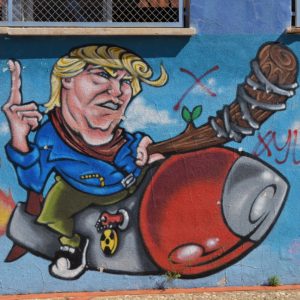
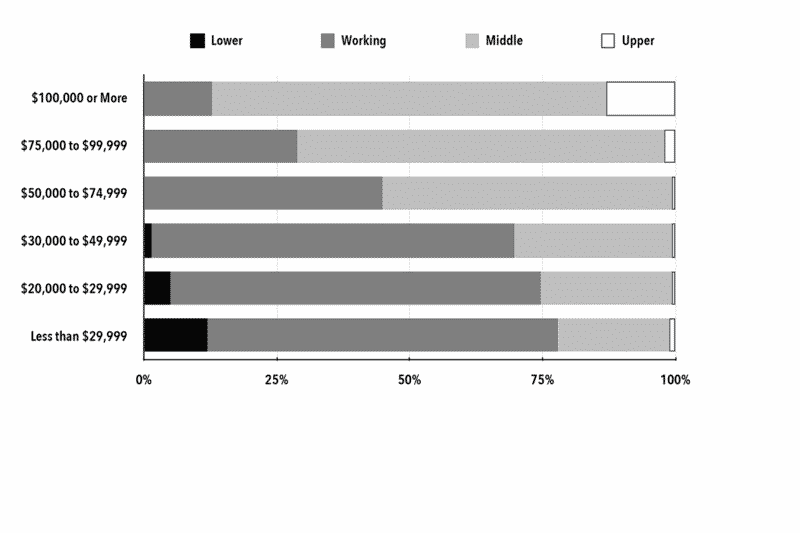
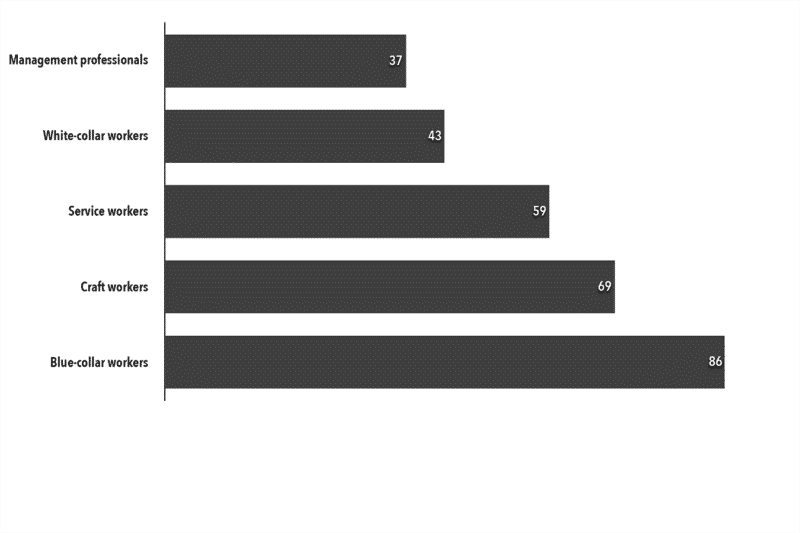
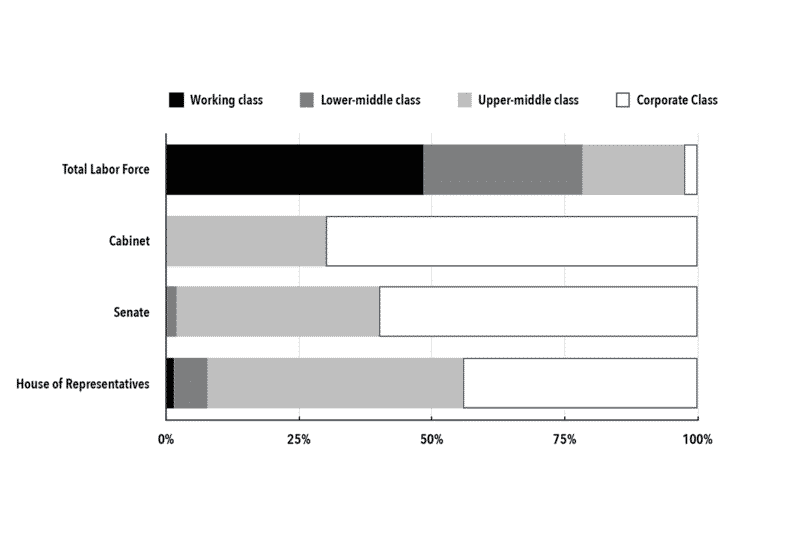
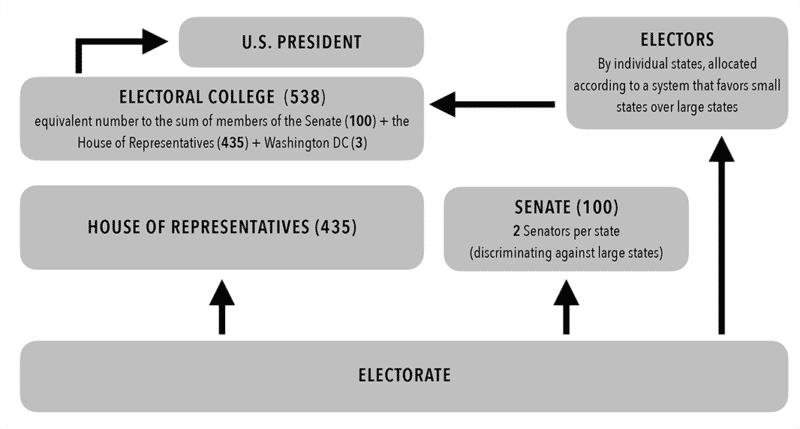
Comments are closed.